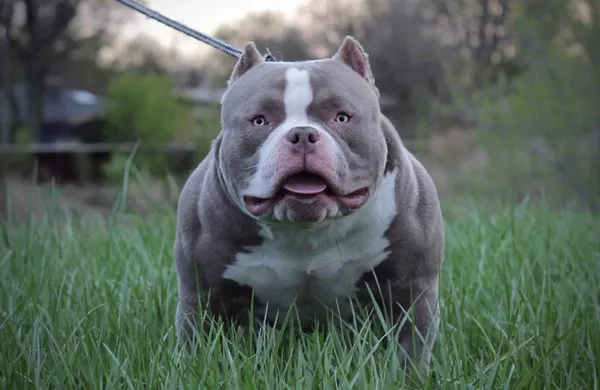Introduction
Bully breeds, also known as “bully dogs” or “bully breed dogs,” have long been a subject of controversy and misunderstanding. This diverse group of canine companions comprises several breeds, each possessing unique characteristics, temperaments, and histories. Sadly, due to misconceptions and negative media portrayal, bully breeds have often been stigmatized as aggressive and dangerous dogs. In this article, we aim to shed light on what a bully breed truly is, debunk common myths surrounding them, and emphasize the importance of responsible pet ownership.
1. Defining Bully Breeds
Bully breeds encompass various dog breeds with similar physical traits, such as a muscular build, broad head, and short coat. Some of the most recognized bully breeds include the American Pit Bull Terrier, American Staffordshire Terrier, and the Staffordshire Bull Terrier. Other breeds like the Bulldog and Bull Terrier are also sometimes considered part of this group. It is essential to recognize that the term “bully breed” is not an official breed designation but rather a colloquial label applied to these dogs based on their physical appearance.
2. Myths Surrounding Bully Breeds
Bully breeds have been victims of numerous myths and misconceptions, contributing to their undeserved negative reputation. Let’s explore some of the most prevalent myths and debunk them:
1: Bully Breeds are Inherently Aggressive
One of the most damaging myths is that bully breeds are born aggressive. In reality, a dog’s behavior is influenced by various factors, including genetics, early socialization, training, and environment. Aggression in any breed can result from mistreatment, neglect, or improper training. Like any other dog, bully breeds can be loving and well-behaved when raised in a positive and caring environment.
2: Bully Breeds have Locking Jaws
Another persistent myth is that bully breeds have a locking mechanism in their jaws, making them exceptionally dangerous. This belief is entirely false. No scientific evidence supports the existence of such a mechanism in any dog breed, including bully breeds. The strength of a dog’s bite depends on individual anatomy, not on the breed itself.
3: Bully Breeds are Not Good Family Pets
Contrary to popular belief, bully breeds can make wonderful family pets. They are often known for their affectionate nature, loyalty, and playfulness. These dogs tend to form strong bonds with their human family members and can be excellent companions for responsible and experienced pet owners.
3. The History of Bully Breeds
To better understand bully breeds, it is crucial to examine their historical background. Many of these breeds were initially developed for bull-baiting, a cruel and now illegal sport where dogs were forced to fight bulls. After bull-baiting was banned, these dogs were repurposed for various tasks, including hunting, farming, and guarding.
In the 19th and early 20th centuries, these breeds were popular family dogs and even adorned famous mascots like the American Pit Bull Terrier, who was once known as the “Nanny Dog” due to their gentle and protective nature towards children. Sadly, their strong appearance attracted unscrupulous individuals who sought to exploit them for illegal dogfighting, contributing to the negative perception of these breeds.
4. The Importance of Responsible Ownership
While it is essential to dispel myths and misconceptions about bully breeds, it is equally crucial to stress the significance of responsible dog ownership. Owning any dog, regardless of breed, comes with responsibilities that must not be taken lightly. Here are some essential aspects to consider:
Provide Proper Training: Early socialization and obedience training are vital for all dogs, but they are especially important for bully breeds due to their strong and energetic nature. Proper training will help create a well-mannered and balanced dog.
Regular Exercise: Bully breeds are generally active and athletic dogs, requiring regular exercise to maintain their physical and mental health. A well-exercised dog is less likely to develop behavioral issues.
Positive Reinforcement: Positive reinforcement training methods, such as treats and praise, work best with bully breeds (and all dogs). Harsh training techniques can lead to fear and aggression.
Spaying and Neutering: Responsible pet owners should consider spaying or neutering their bully breed dogs. This can prevent unwanted litters and may reduce certain behavioral issues.
5. Fighting Breed-Specific Legislation (BSL)
Over the years, some jurisdictions have implemented Breed-Specific Legislation (BSL) targeting bully breeds, which restricts or bans their ownership based solely on their appearance. However, numerous studies have shown that BSL is ineffective in reducing dog-related incidents. Responsible dog ownership, education, and enforcement of existing animal laws are far more effective approaches to improving public safety.
Conclusion
In conclusion, bully breeds are a diverse group of dogs that have been unfairly stigmatized due to misinformation and negative media portrayal. It is essential to judge each dog as an individual and not base opinions solely on their breed. Responsible ownership, early socialization, and positive training methods are crucial for fostering well-behaved and loving bully breed pets. By debunking myths, understanding their history, and advocating for responsible pet ownership, we can help change the perception of bully breeds and ensure they receive the love and care they deserve.


